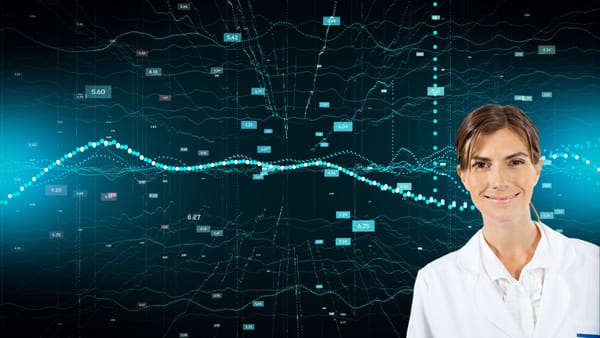GPT-4o: Transforming the Future of Spatial Computing and AR/VR Glasses
The rapid advancements in artificial intelligence (AI) have continuously reshaped our interaction with technology. The introduction of GPT-4o, an evolution in the GPT series, stands poised to significantly impact the realms of spatial computing and augmented/virtual reality (AR/VR) glasses.

The rapid advancements in artificial intelligence (AI) have continuously reshaped our interaction with technology. The introduction of GPT-4o, an evolution in the GPT series, stands poised to significantly impact the realms of spatial computing and augmented/virtual reality (AR/VR) glasses.
This article delves into how GPT-4o can revolutionise these technologies, enhancing user experience, efficiency, and the integration of virtual and real worlds.
Understanding GPT-4o
GPT-4o, the latest iteration of the Generative Pre-trained Transformer model, boasts enhanced capabilities in natural language processing (NLP), understanding context, and generating human-like responses. This AI model can process vast amounts of data, learn from it, and produce outputs that are increasingly indistinguishable from human-generated content. Its implications stretch across various domains, but its influence on spatial computing and AR/VR is particularly transformative.
Enhancing Spatial Computing
Spatial computing involves the interaction with digital information in a physical space. It encompasses technologies such as AR, VR, mixed reality (MR), and the Internet of Things (IoT). GPT-4o can significantly elevate spatial computing through the following means:
- Intelligent Contextual Understanding:
GPT-4o’s advanced NLP capabilities enable devices to understand and interpret user commands more accurately within spatial contexts. For example, in an AR environment, GPT-4o can interpret complex user instructions, providing relevant information or actions based on the spatial and situational context. - Seamless Human-Machine Interaction:
By leveraging GPT-4o, spatial computing devices can facilitate more natural and fluid interactions between humans and machines. This leads to a more intuitive user experience, where users can communicate with their devices as they would with another person, using natural language and gestures. - Enhanced Predictive Analytics:
GPT-4o’s ability to analyze and predict user behavior and preferences can be integrated into spatial computing systems. This results in more personalized experiences, where the system anticipates user needs and adjusts the virtual environment accordingly.
Transforming AR/VR Glasses
AR/VR glasses have already begun to change how we interact with digital content and the real world. The integration of GPT-4o can propel these devices to new heights:
- Improved User Interface (UI) and User Experience (UX):
GPT-4o can refine the UI/UX of AR/VR glasses by providing more accurate and context-aware responses. This includes understanding voice commands better, offering more relevant information overlays in AR, and creating more immersive and interactive VR environments. - Real-Time Language Translation and Assistance:
With GPT-4o, AR/VR glasses can provide real-time language translation, making communication across different languages seamless. Additionally, the AI can offer real-time assistance for tasks, such as navigation, shopping, or even complex technical support, directly through the glasses. - Content Creation and Customization:
GPT-4o’s generative capabilities can be harnessed to create and customize content in real-time. For instance, users can generate virtual objects, environments, or scenarios by simply describing them. This empowers users to personalize their AR/VR experiences without needing extensive technical skills. - Enhanced Accessibility Features:
AR/VR glasses powered by GPT-4o can significantly enhance accessibility for individuals with disabilities. Features such as real-time audio descriptions for the visually impaired, gesture recognition for those with limited mobility, and speech-to-text for the hearing impaired can be vastly improved.
The Future Landscape
The convergence of GPT-4o with spatial computing and AR/VR glasses heralds a future where the boundaries between the digital and physical worlds blur. This synergy will foster innovations in various fields, including:
- Education and Training: Interactive and immersive learning environments can be created, providing hands-on experiences without physical constraints.
- Healthcare: Enhanced telemedicine, surgical simulations, and patient monitoring through AR/VR glasses equipped with AI assistance.
- Entertainment and Media: More engaging and personalized content delivery, including immersive gaming experiences and interactive storytelling.
- Workplace Productivity: Virtual workspaces that facilitate collaboration and creativity, transcending geographical limitations.
Challenges and Considerations
While the potential is immense, there are challenges to address, such as privacy concerns, data security, and the ethical use of AI. Ensuring that GPT-4o-powered devices handle user data responsibly and transparently is crucial for gaining and maintaining user trust.
Conclusion
GPT-4o represents a monumental leap in AI capabilities, with the potential to revolutionize spatial computing and AR/VR glasses. By enhancing user interactions, personalizing experiences, and breaking down language barriers, GPT-4o will shape a future where technology seamlessly integrates with our daily lives.
As we navigate this transformative journey, it is essential to balance innovation with ethical considerations, ensuring a future that is not only advanced but also responsible and inclusive.






